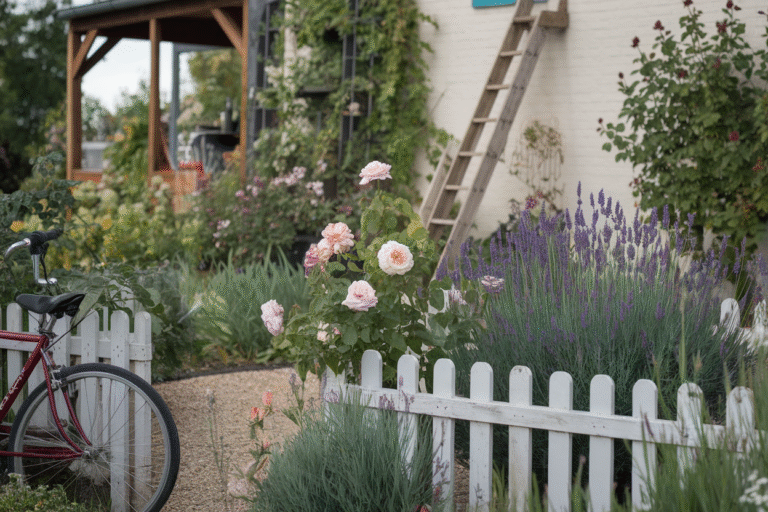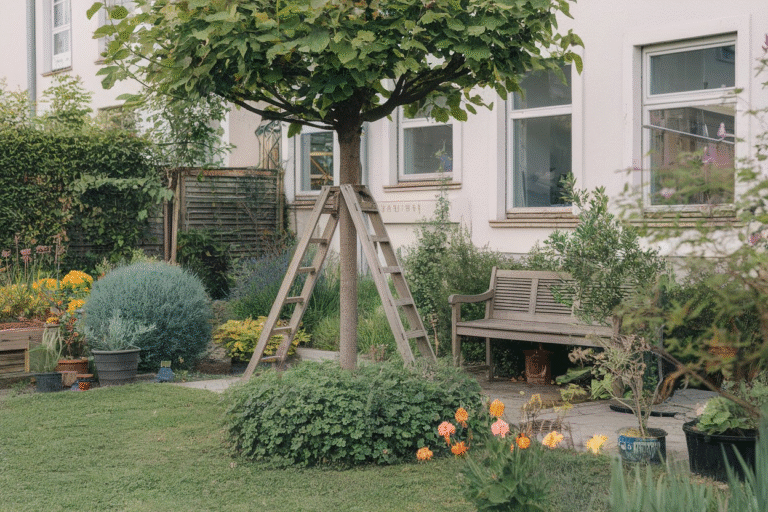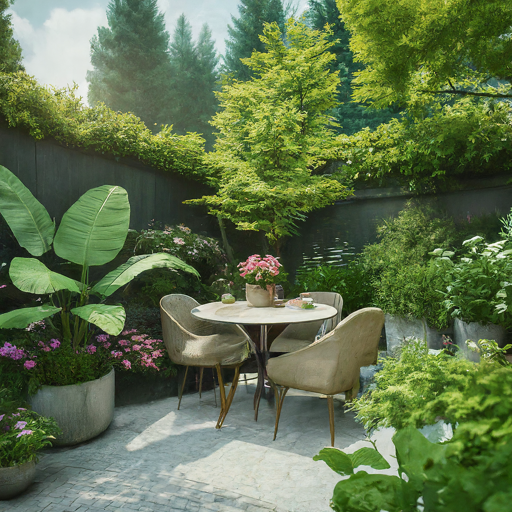19 Vertical Garden Wall Ideas
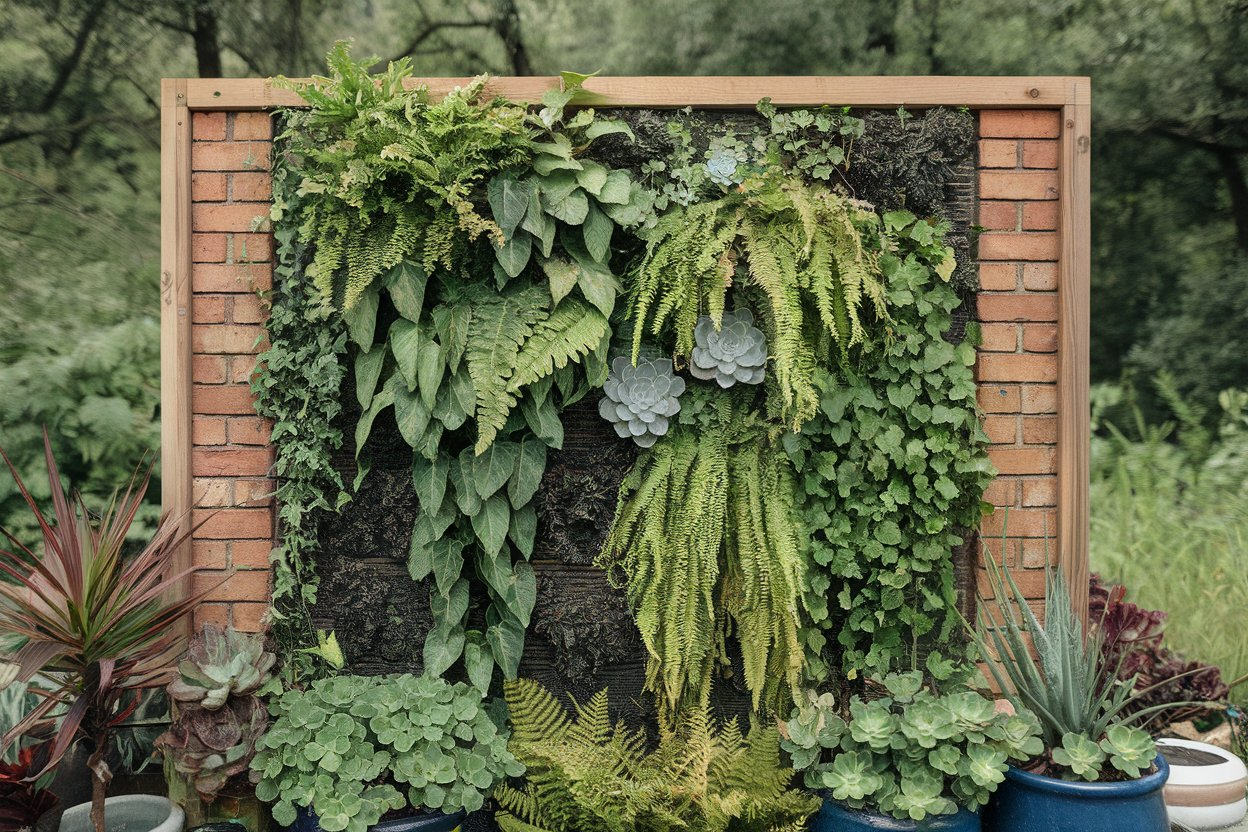
If you’ve ever looked at a bare wall and thought, “You could use a little life,” you’re not alone. I once had a dead corner in my patio—concrete, cracked, uninspiring—and one day I decided to plant up. Literally. What happened next was a blooming transformation that made me fall in love with vertical gardening.
In this guide, I’m handing you my favorite 19 vertical garden wall ideas—some tried and true, others a little quirky—all designed to make the most of your vertical space whether you’re working with a tiny balcony or a sprawling backyard. So, pull on your gloves and let’s get growing up, not out.
1. Pocket-Style Fabric Planters
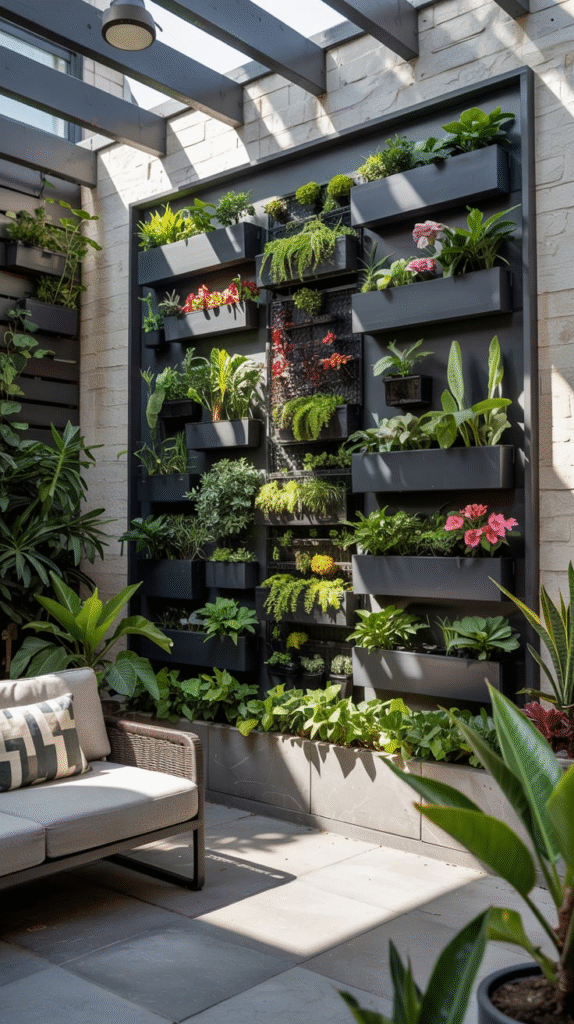
Let’s kick things off with the pocket planter wall. This is essentially a piece of thick felt or canvas, stitched into rows of planting pouches. Think of it like a shoe organizer, but for herbs and succulents.
Why it works: These fabric pockets are lightweight, easy to mount, and perfect for small plants like basil, mint, or pansies. Water drips from the top pockets down, so it’s efficient, too.
Tip: Make sure your wall can handle some moisture, or mount it on a waterproof backboard.
2. Wooden Crate Garden Wall
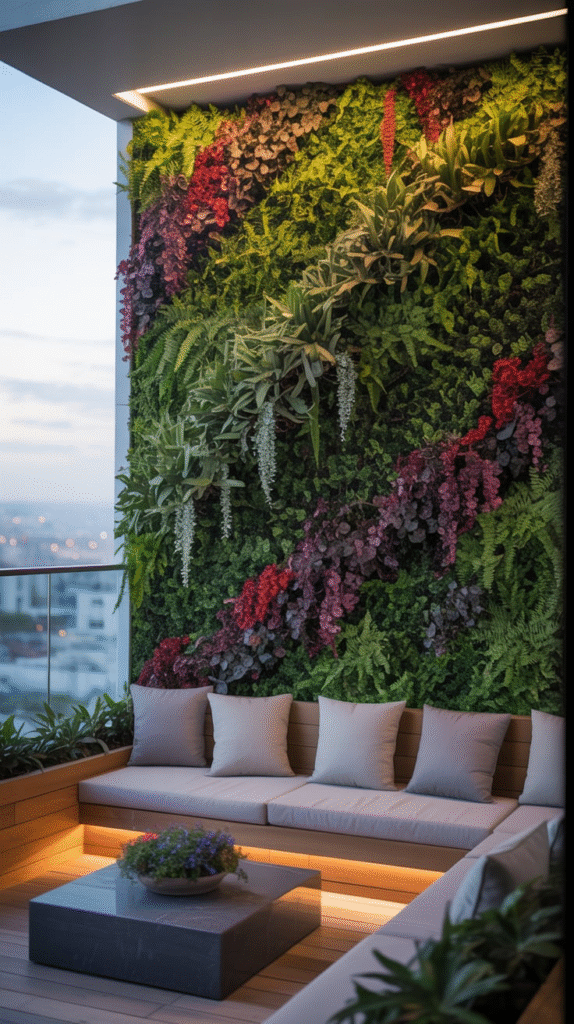
This is a rustic gem. I once picked up a few old apple crates from a flea market, stacked them, and filled them with potting soil and petunias. The effect? A cottage garden vibe in the middle of the city.
Why it works: Wooden crates add depth and structure. They’re sturdy, easy to customize with paint, and ideal for larger plants like geraniums or even strawberries.
Tip: Use a wood sealant if your crates will be outdoors.
3. Pallet Garden Wall
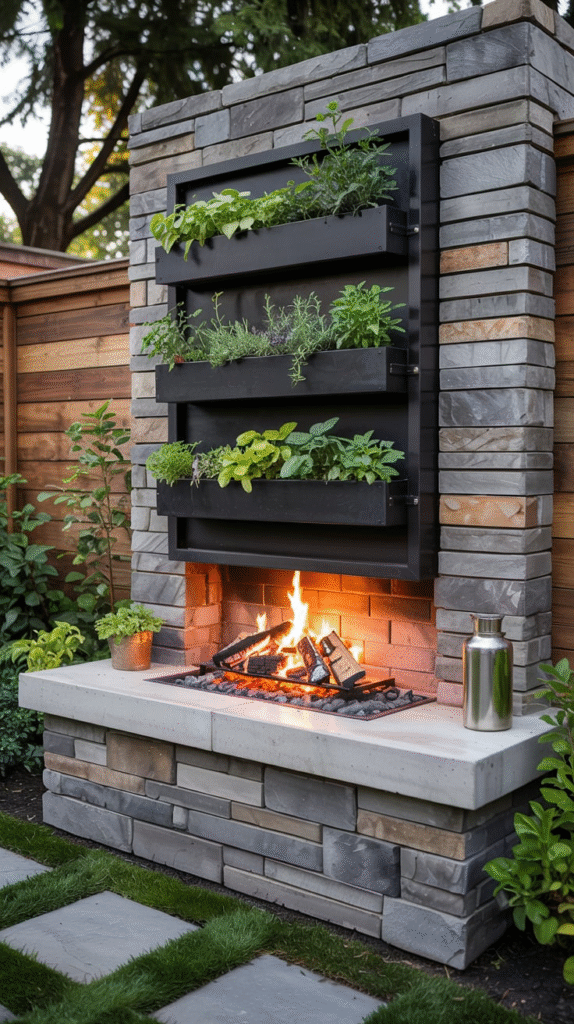
Ah, the humble wood pallet—free, versatile, and shockingly chic when used right. Lean it against a wall, fill the gaps with soil and seedlings, and you’ve got an instant garden wall.
Why it works: Pallets provide natural dividers, which means you can grow several types of plants in one space—herbs, lettuce, trailing flowers, you name it.
Tip: Sand down rough edges and treat with food-safe wood preservatives.
4. Hanging Mason Jar Garden
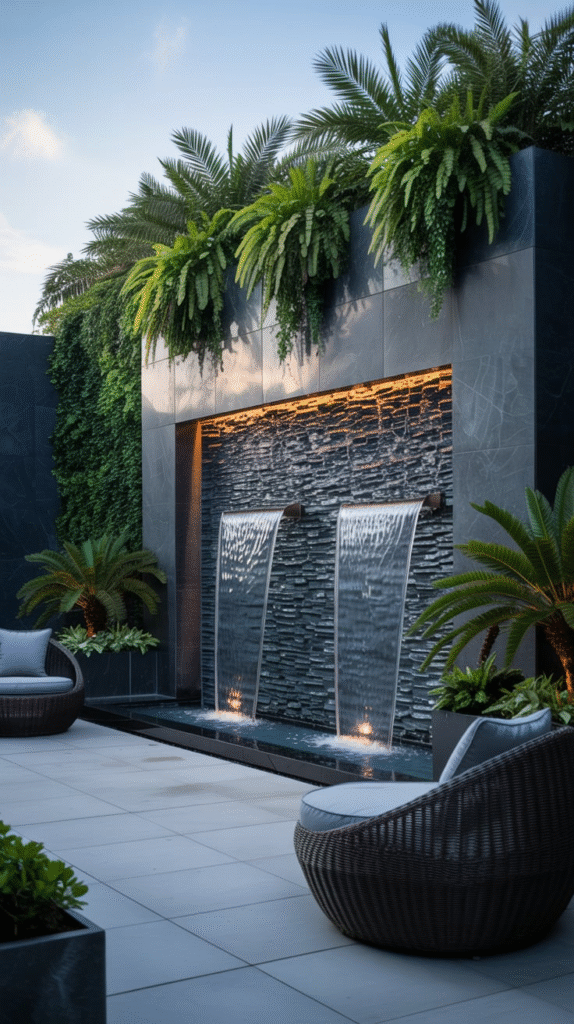
There’s something charming about glass jars filled with green. You can mount a series of mason jars to a plank or hang them individually on hooks. Perfect for indoors or a sunny kitchen wall.
Why it works: Great for growing kitchen herbs like thyme, oregano, or even small chili plants. And it looks like something straight out of a Pinterest dream board.
Tip: Add pebbles at the bottom of jars for drainage.
5. Ladder Garden Wall
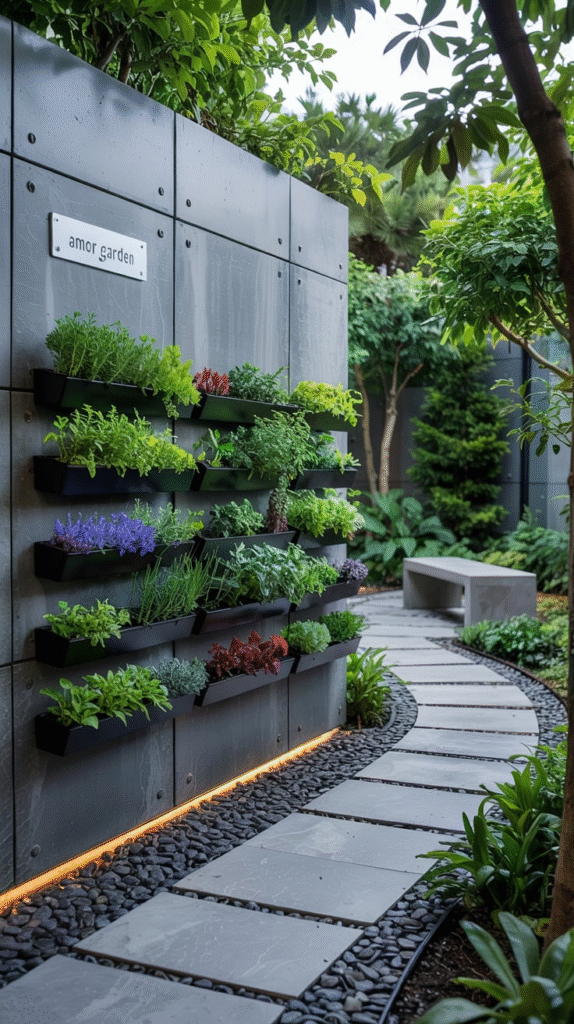
Repurpose that old ladder collecting dust in the shed. Stand it upright, lean it safely, and hang or shelf small planters on each rung.
Why it works: It’s space-efficient, adds height variety, and creates a neat, tiered effect.
Tip: Paint the ladder a vibrant color to make your greenery pop.
6. Trellis with Climbing Plants
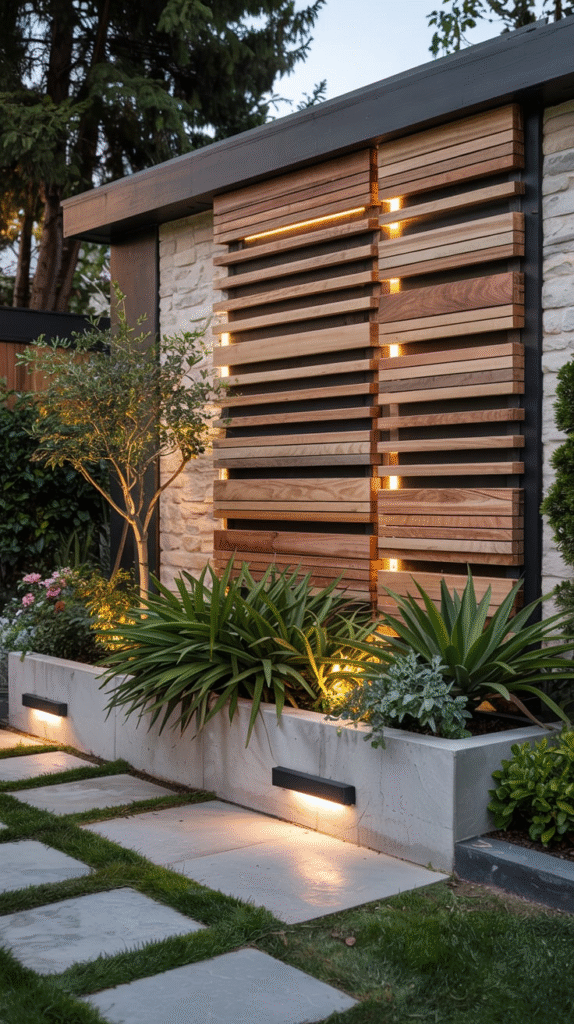
Some walls are better when they’re clothed in vines. A sturdy trellis invites climbers like ivy, jasmine, or sweet peas to wind their way upward in a poetic dance of green.
Why it works: Trellises provide support for vining plants, and they create natural privacy screens as they grow thicker.
Tip: Use wire mesh or wood panels if you want a DIY trellis on a budget.
7. Gutter Garden Wall
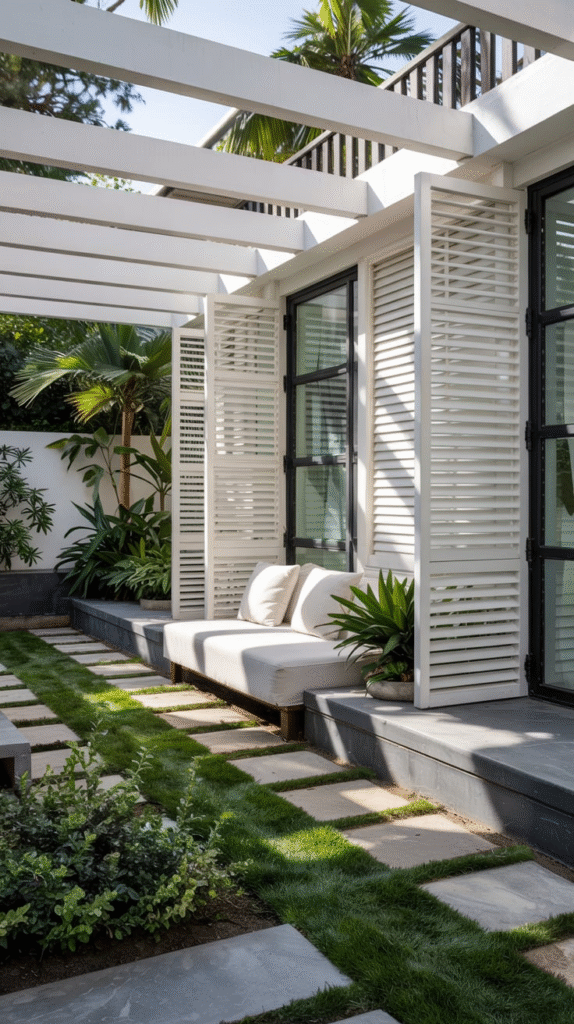
Who knew rain gutters could be repurposed into something so clever? Attach sections of gutter horizontally to a wall and plant shallow-rooted herbs or flowers.
Why it works: It’s great for urban spaces, offers easy irrigation, and is relatively low cost.
Tip: Drill drainage holes and use lightweight soil.
8. Vertical Hydroponic Tower
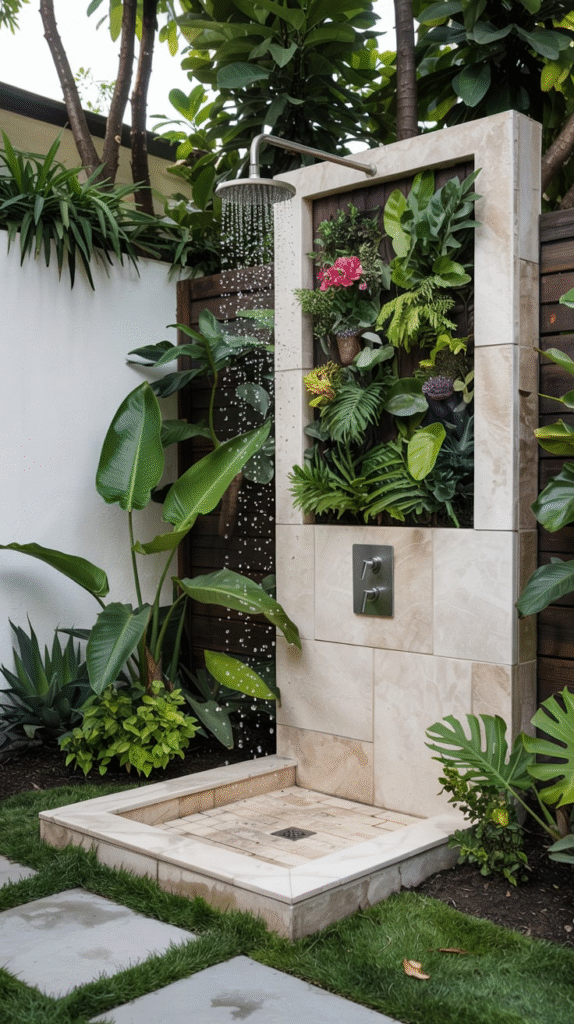
For the tech-savvy gardener, a hydroponic tower system delivers high yields with no soil. Just water, nutrients, and a power source.
Why it works: Grows leafy greens incredibly fast, saves water, and is ideal for balconies or rooftops.
Tip: Keep an eye on nutrient balance and clean the system regularly.
9. Frame It Like Art
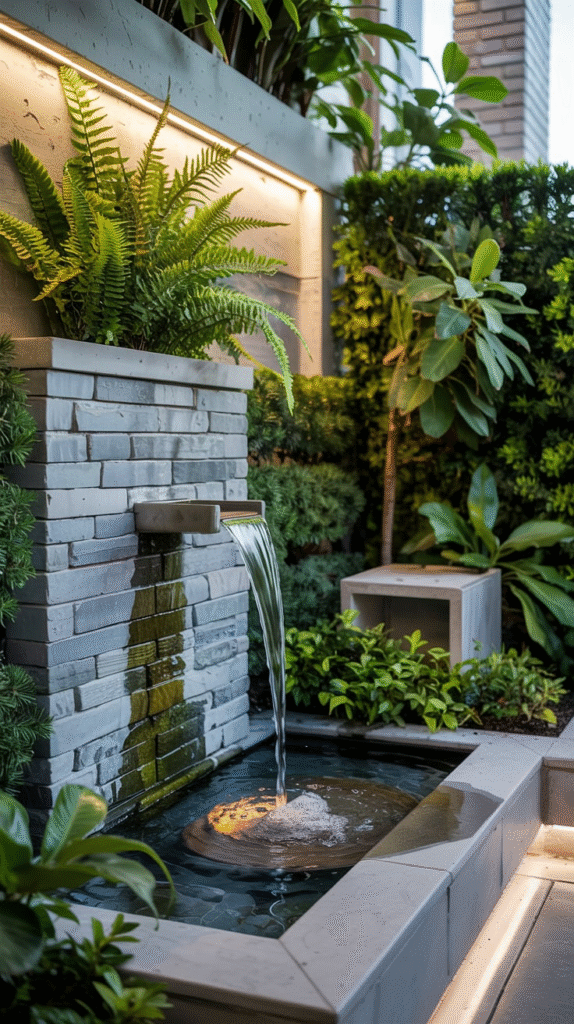
Mount small succulents or air plants in a deep picture frame filled with mesh and moss. Hang it like a painting, and voila—living wall art.
Why it works: Brings together the worlds of botany and design, perfect for indoor spaces or stylish patios.
Tip: Choose plants that don’t need a ton of soil—think air plants, hens-and-chicks, or sedum.
10. Recycled Bottle Garden
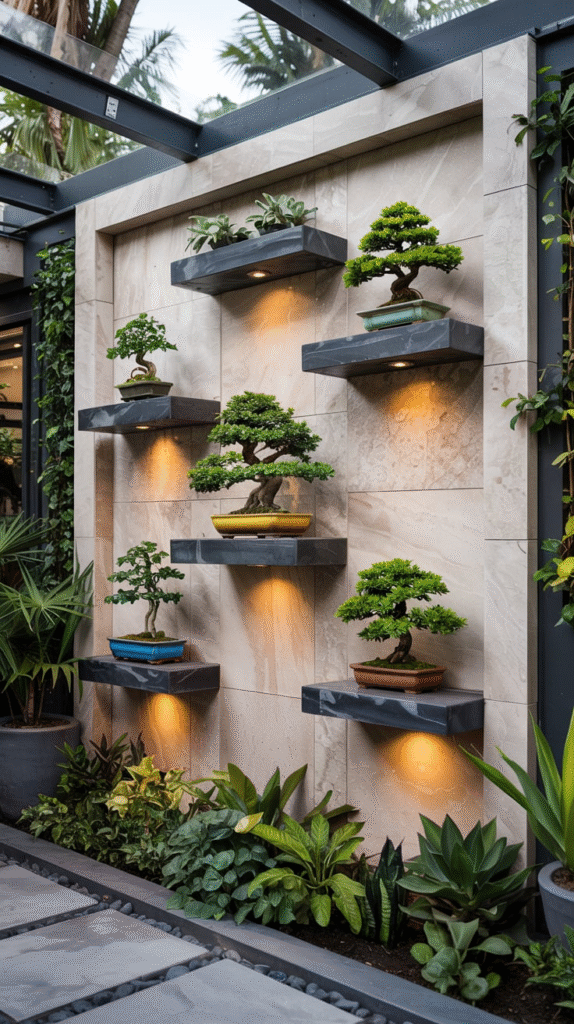
Grab those used plastic bottles, slice open one side, plant something inside, and hang them in rows on a fence or board. Sustainability meets creativity.
Why it works: It’s the ultimate eco-conscious vertical garden, and a great project for kids or schools.
Tip: Paint the bottles or use clear ones for a modern look.
11. Bamboo Wall Planter
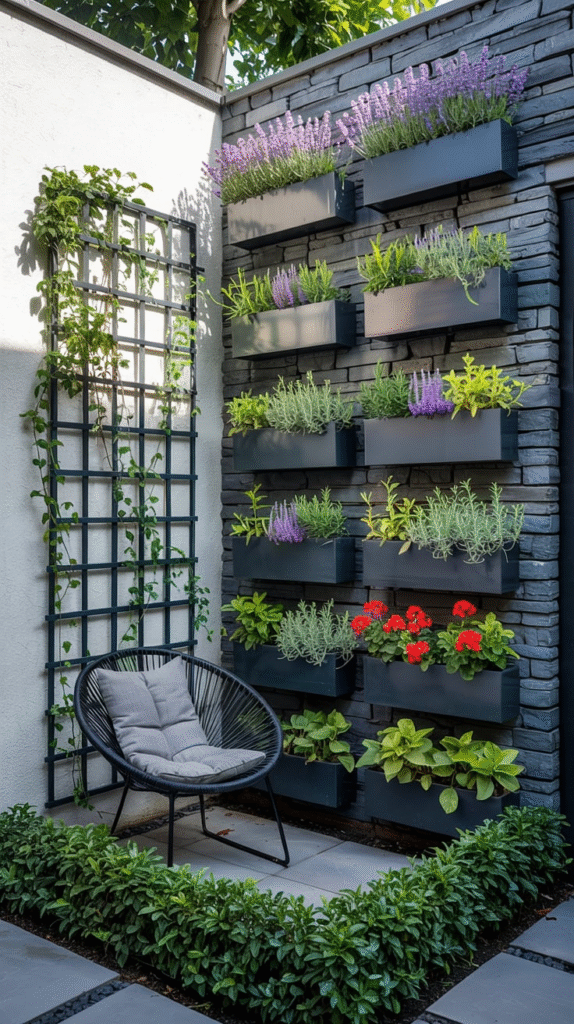
Bamboo has a warm, zen-like aesthetic. Mount bamboo segments horizontally, open at the top, and fill them with soil and small plants.
Why it works: Naturally weather-resistant and beautifully minimalist. It brings a sense of calm to your green space.
Tip: Secure bamboo tightly; it can roll or split if untreated.
12. Pegboard Plant Display
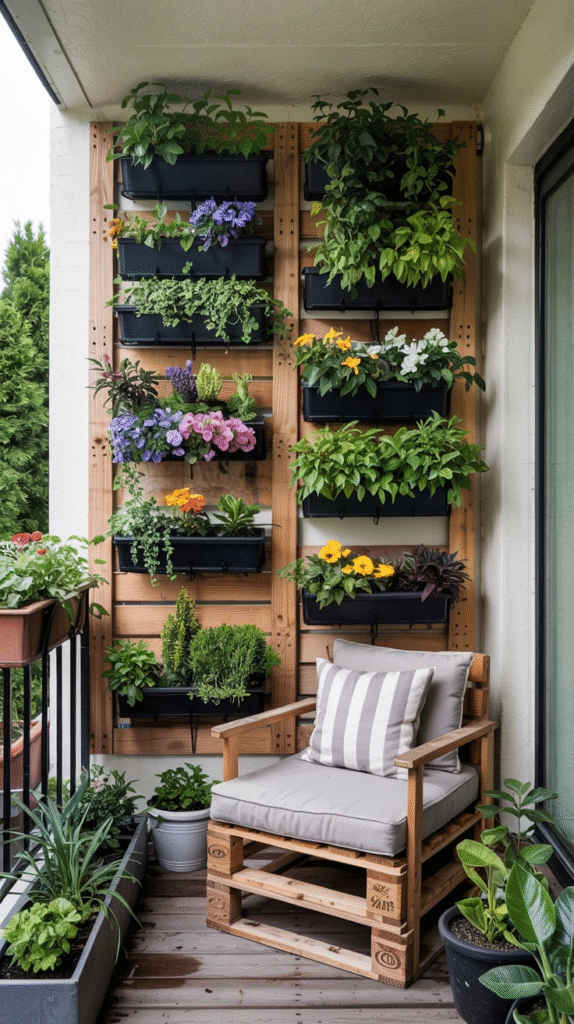
A classic garage staple turned green wall superstar. Mount a pegboard, then hang small planters using S-hooks or wooden shelves.
Why it works: You can rearrange your setup anytime—like garden Lego for adults.
Tip: Use lightweight pots and balance the layout visually.
13. Metal Grid with Hanging Pots
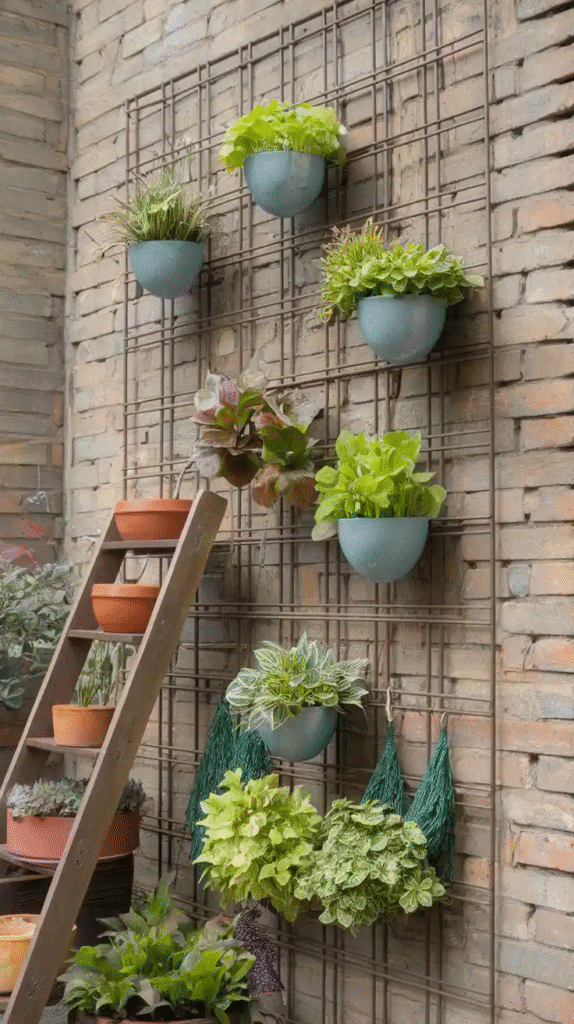
Install a black or copper metal grid and hang small planters using hooks or rope. The industrial look pairs well with lush green foliage.
Why it works: Strong, sleek, and scalable. Works great in modern interiors or balconies.
Tip: Combine textures—clay pots, wooden boxes, or fabric planters—for added charm.
14. Stair-Step Wall Planter
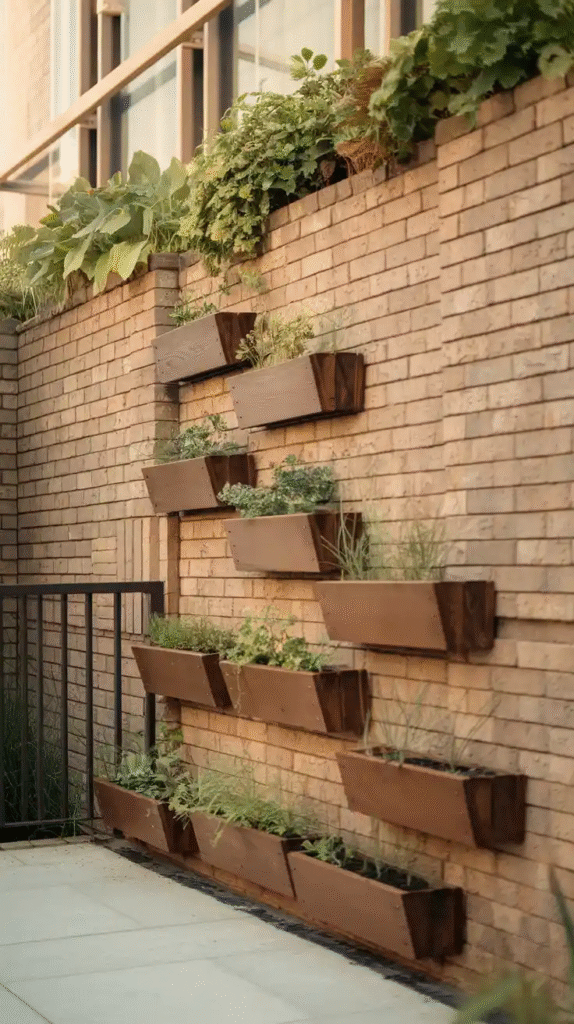
Build (or buy) a stair-step shelf and fill each “step” with containers of plants. Ideal for backyards or large balcony walls.
Why it works: Offers depth and elevation, and can host larger plants like ferns or small palms.
Tip: Alternate heights of pots for visual balance.
15. Tin Can Planter Wall
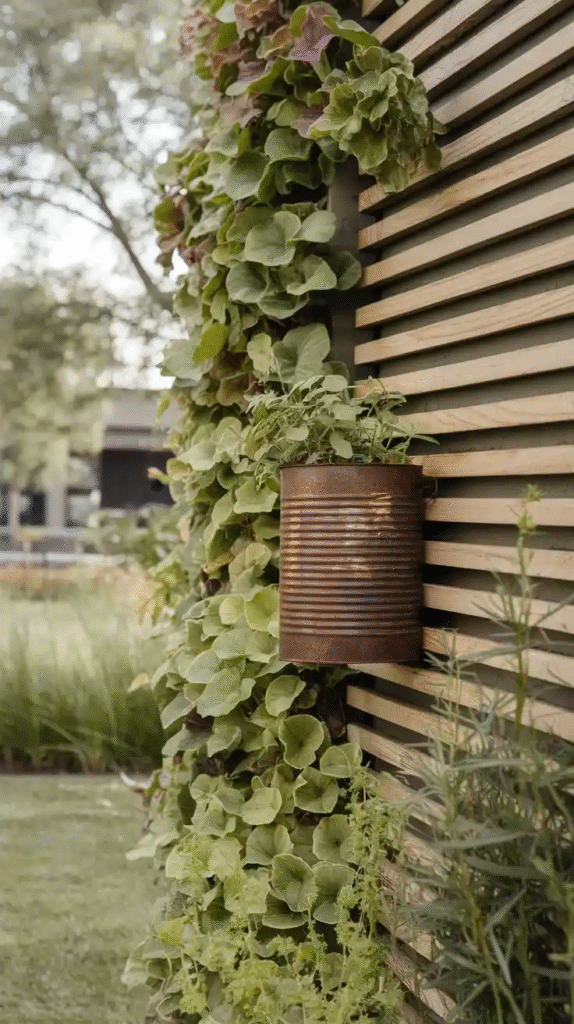
Recycle soup cans or coffee tins. Punch a few drainage holes, paint them in bold colors, and attach to a vertical board or fence.
Why it works: Super budget-friendly and endlessly customizable.
Tip: Use rust-resistant paint to protect the cans.
16. Cork Board Herb Garden
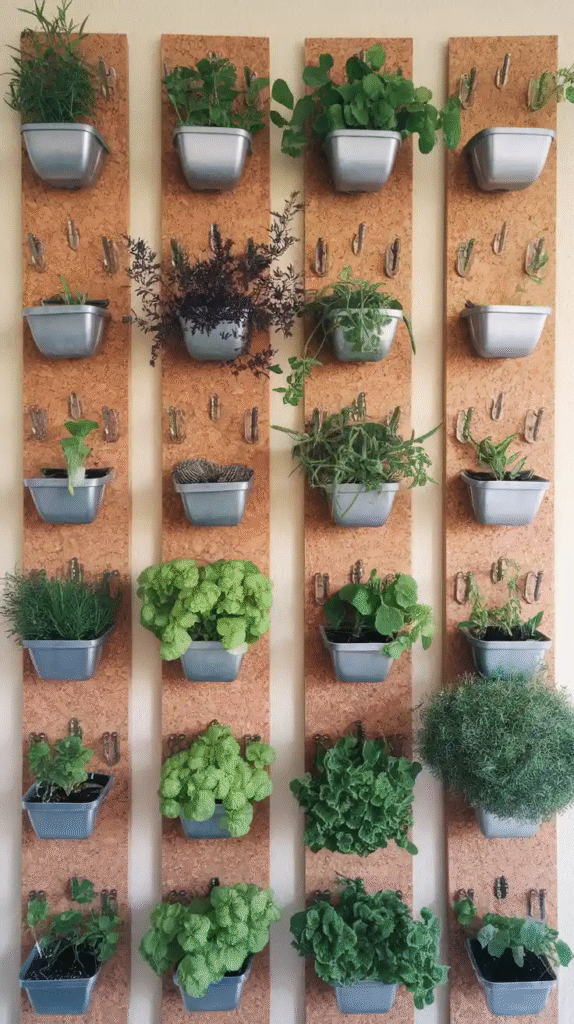
Mount a corkboard and attach small pouches or tiny pots with push pins or velcro. Best for lightweight herbs and indoor environments.
Why it works: Fun and functional, especially in a kitchen near a sunny window.
Tip: Swap out plants easily with seasonal herbs.
17. Concrete Wall Pockets
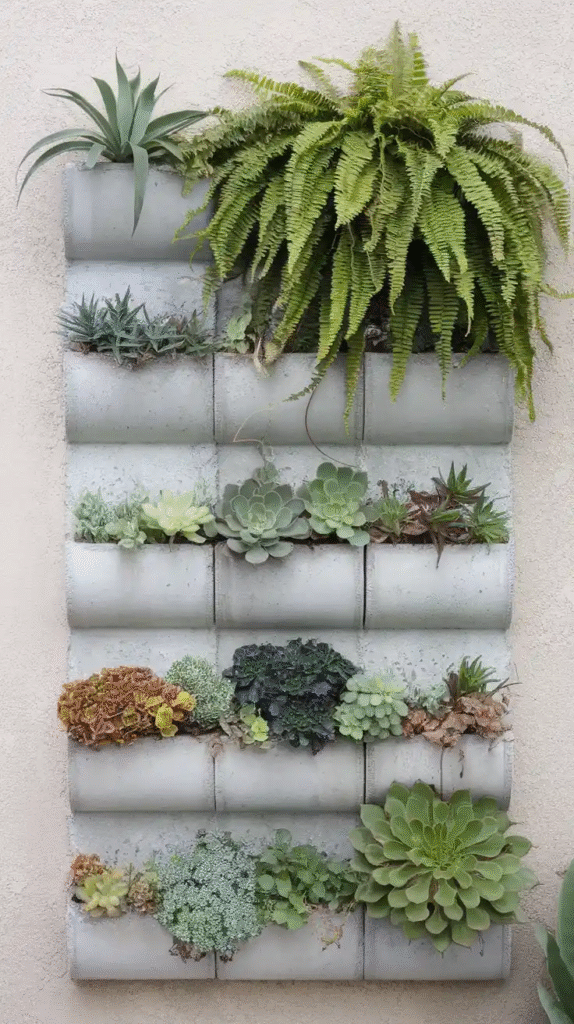
For something more architectural, concrete planters embedded into a wall look clean and bold. These are great for larger outdoor installations.
Why it works: Weatherproof, sleek, and ideal for hardy plants like lavender or rosemary.
Tip: Pair with LED wall lights for evening ambiance.
18. Hanging Buckets and Chains
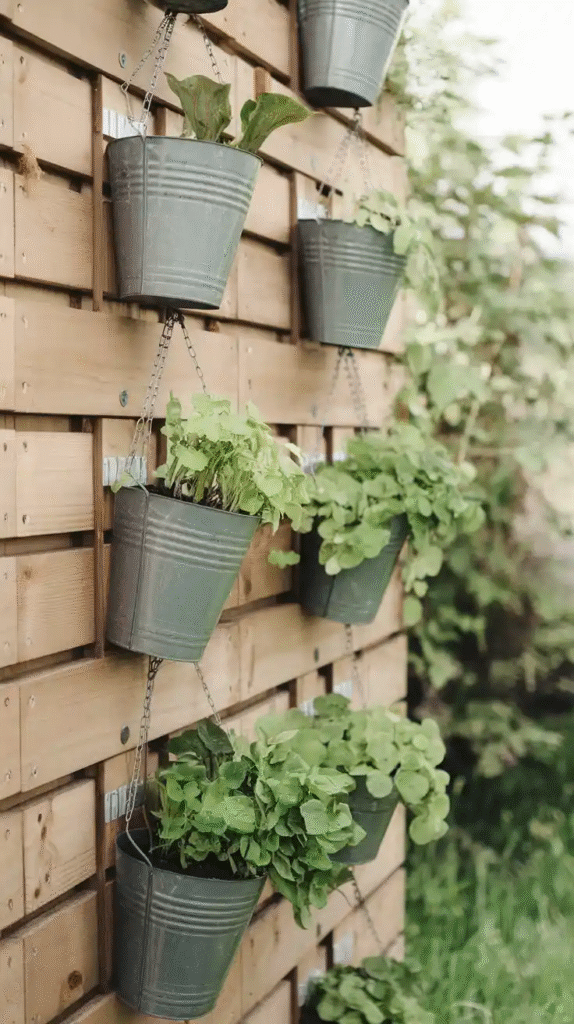
Hang small galvanized buckets from sturdy chains mounted vertically or on a metal grid. Add flowering plants, and the result is whimsical.
Why it works: The movement in the wind adds charm and you can easily swap buckets in and out.
Tip: Secure buckets well to avoid tipping over in strong wind.
19. Modular Vertical Planters
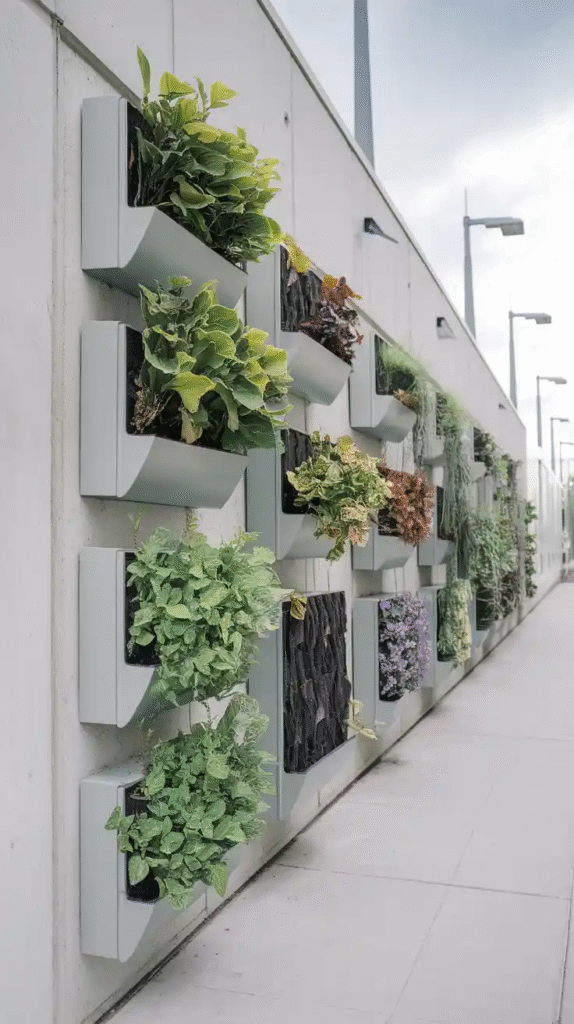
Think of these like green building blocks. Modular vertical planters (like stackable boxes or tiles) can be arranged any way you like and expanded over time.
Why it works: Scalable, easy to install, and fits both modern and rustic aesthetics depending on materials.
Tip: Choose self-watering options for low maintenance.
Choosing the Right Plants for Vertical Gardens
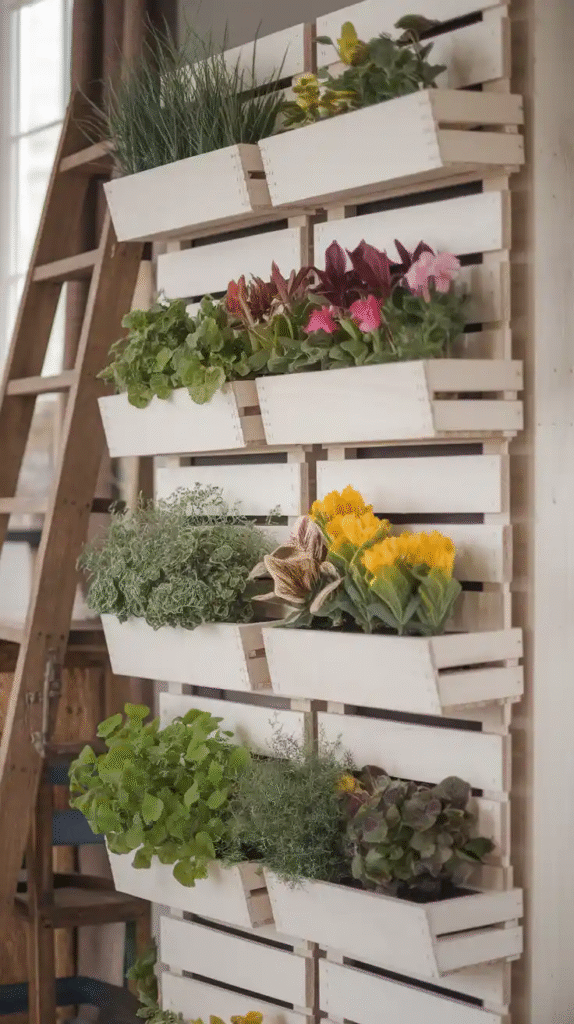
Now that your wall is ready to bloom, let’s talk green. Not every plant is cut out for the vertical life. Here’s a short guide:
- Herbs: Basil, mint, oregano, thyme, parsley
- Succulents: Sedum, echeveria, hens-and-chicks
- Ferns: Boston fern, maidenhair, asparagus fern
- Vines: English ivy, pothos, jasmine, sweet peas
- Flowers: Petunias, pansies, geraniums, nasturtiums
- Veggies: Lettuce, spinach, strawberries, cherry tomatoes (with support)
Pro Tip: Stick to shallow-rooted plants for smaller containers, and match plant choices to the light conditions of your wall.
Soil, Watering, and Maintenance
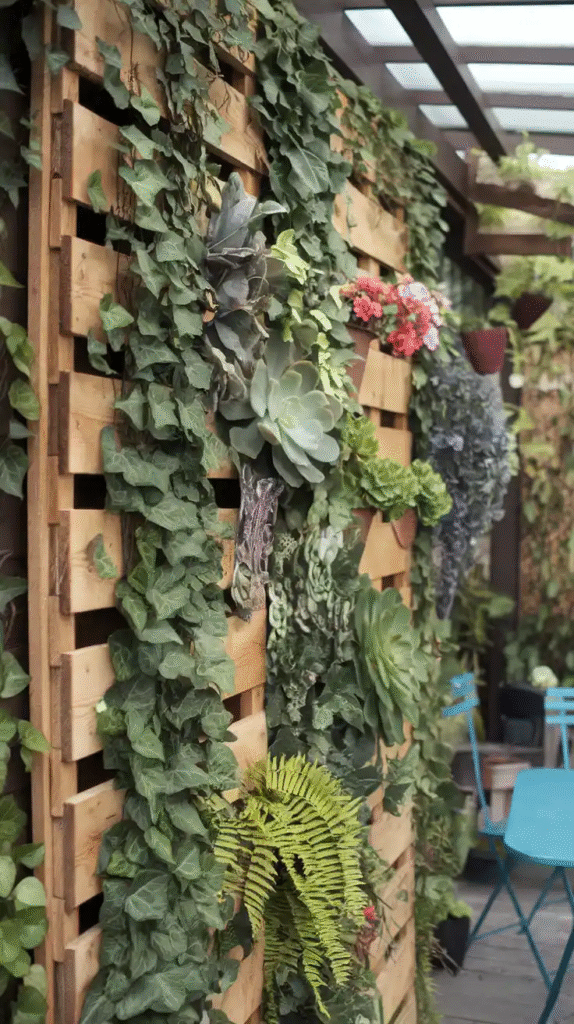
Vertical gardens have different needs than your average potted plant. Here’s the inside scoop:
- Soil: Use light, well-draining soil, especially for hanging or high-mounted planters.
- Watering: Water from the top, letting it trickle down. But check the bottom plants—they sometimes get overwatered.
- Fertilizer: Liquid fertilizer every few weeks keeps the wall lively.
- Pruning: Keep plants trimmed to avoid overcrowding and to encourage new growth.
- Pests: Keep an eye out for mites or aphids, especially on leafy greens.
Conclusion
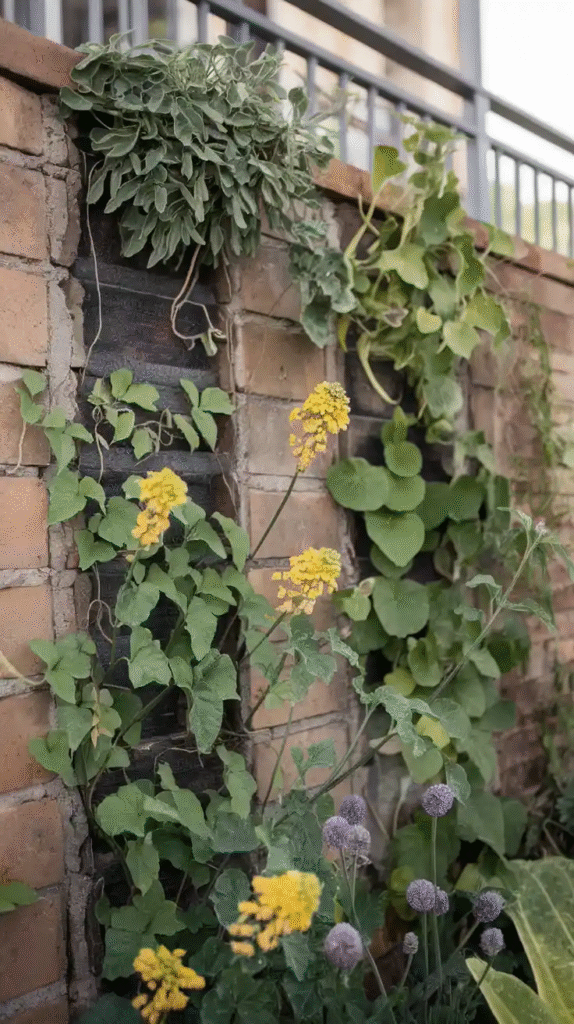
Your vertical garden wall isn’t just a collection of plants—it’s a living mural, a space that breathes and changes with the seasons. Mine started small—just a few basil pots and succulents in mason jars. But over time, it became a habit, almost a ritual, to tend that wall. And every visitor who sees it says the same thing: “This is so peaceful.”
So start with one idea—just one. Maybe it’s a wooden pallet or a corkboard herb wall in your kitchen. Then grow from there. Quite literally.



